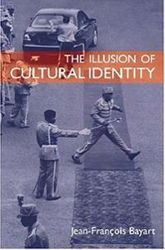 Accusations of cultural appropriation have been especially prevalent recently. The depiction of Jeff Bezos as Vishnu on the cover of Fortune magazine elicited complaints from some people who identify with Hinduism, as did the Krewe of Galatea parading their court as Hindu deities during Mardi Gras festivities. The recent Coldplay/Beyoncé music video release “Hymn for the Weekend” also has generated complaints about its depiction of India and the ways some artists profit off of these images.
Accusations of cultural appropriation have been especially prevalent recently. The depiction of Jeff Bezos as Vishnu on the cover of Fortune magazine elicited complaints from some people who identify with Hinduism, as did the Krewe of Galatea parading their court as Hindu deities during Mardi Gras festivities. The recent Coldplay/Beyoncé music video release “Hymn for the Weekend” also has generated complaints about its depiction of India and the ways some artists profit off of these images.
Images of India have been used for decades, from the 007 film Octopussy to Indiana Jones and the Temple of Doom, and the complaints that they have spawned have basis in the colonialism and neocolonialism of India and the global inequality that such images — in their construction of India as some place totally different — reinforce. One critique of the Coldplay/Beyoncé music video expressed concern for artists profiting from images of Indians always throwing colors, as if everyday was Holi. However, the author’s own discussion actually suggests one limitation of claims of cultural appropriation. Continue reading “Cultural Entrepreneurs”

 Robert Dear’s attack on the Planned Parenthood clinic in Colorado Springs just over a week ago and the shooting in San Bernardino last week have brought the question of who is identified as a terrorist back into the limelight. Lots of people have highlighted how the
Robert Dear’s attack on the Planned Parenthood clinic in Colorado Springs just over a week ago and the shooting in San Bernardino last week have brought the question of who is identified as a terrorist back into the limelight. Lots of people have highlighted how the  “Look! . . . Up in the sky. . . . It’s a bird. . . . It’s a plane. . . . No, it’s Superman!” When someone points out something in the distance, like an object flying through the sky, it can be hard to recognize just what it is. We attempt to name it, place it in a clear category, but sometimes our categories don’t fit, especially when working with complex societies, and the category that we attempt to force it into often influences what we actually see.
“Look! . . . Up in the sky. . . . It’s a bird. . . . It’s a plane. . . . No, it’s Superman!” When someone points out something in the distance, like an object flying through the sky, it can be hard to recognize just what it is. We attempt to name it, place it in a clear category, but sometimes our categories don’t fit, especially when working with complex societies, and the category that we attempt to force it into often influences what we actually see.
 The Huffington Post has a new
The Huffington Post has a new 
 “A great many anthropological and historical studies have shown that pre-colonial societies were almost always mutli-ethnic, and included a great diversity of cultural repertoires; that the principal forms of social or religious mobilisation were trans-ethnic; and that ancient Africa most definitely did not consist of a mosaic of ethnic groups. This does not mean that ethnicity is a pure construct … produced by colonising powers that sought to divide the better to rule, as African nationalists — and, paradoxically, some ethno-nationalists — still like to believe. Colonised peoples took part in its ‘formation’ by appropriating the new political, cultural and economic resources of the bureaucratic state. In one of the many working misunderstandings, ‘Europeans believed Africans belonged to tribes; [whereas] Africans built tribes to belong to’, as John Iliffe brilliantly expressed it.* The political importance of ethnicity proceeds precisely from the fact that it is an eminently modern phenomenon connected to the ‘imported state’, and not a residue or resurgence of ‘traditional culture’.” (29-30)
“A great many anthropological and historical studies have shown that pre-colonial societies were almost always mutli-ethnic, and included a great diversity of cultural repertoires; that the principal forms of social or religious mobilisation were trans-ethnic; and that ancient Africa most definitely did not consist of a mosaic of ethnic groups. This does not mean that ethnicity is a pure construct … produced by colonising powers that sought to divide the better to rule, as African nationalists — and, paradoxically, some ethno-nationalists — still like to believe. Colonised peoples took part in its ‘formation’ by appropriating the new political, cultural and economic resources of the bureaucratic state. In one of the many working misunderstandings, ‘Europeans believed Africans belonged to tribes; [whereas] Africans built tribes to belong to’, as John Iliffe brilliantly expressed it.* The political importance of ethnicity proceeds precisely from the fact that it is an eminently modern phenomenon connected to the ‘imported state’, and not a residue or resurgence of ‘traditional culture’.” (29-30) I was at Chipotle this weekend, waiting to order my favorite fast food (crunchy chicken tacos with veggies, heavy on the corn salsa). The man behind me in line spoke fluent English to a child with him, but when it was his turn at the counter, he looked at the young female employee and began ordering in Spanish. The glitch in the plan was that while he was talking to a woman with brown skin (who, according to popular identifiers, might have a better chance of being a Spanish-speaker than others), she was not a Spanish speaker at all; in fact, as she pointed out to him, she was Asian. After a few embarrassing laughs the burrito bowls and extra guac were ordered, and everyone scooted out the door.
I was at Chipotle this weekend, waiting to order my favorite fast food (crunchy chicken tacos with veggies, heavy on the corn salsa). The man behind me in line spoke fluent English to a child with him, but when it was his turn at the counter, he looked at the young female employee and began ordering in Spanish. The glitch in the plan was that while he was talking to a woman with brown skin (who, according to popular identifiers, might have a better chance of being a Spanish-speaker than others), she was not a Spanish speaker at all; in fact, as she pointed out to him, she was Asian. After a few embarrassing laughs the burrito bowls and extra guac were ordered, and everyone scooted out the door.